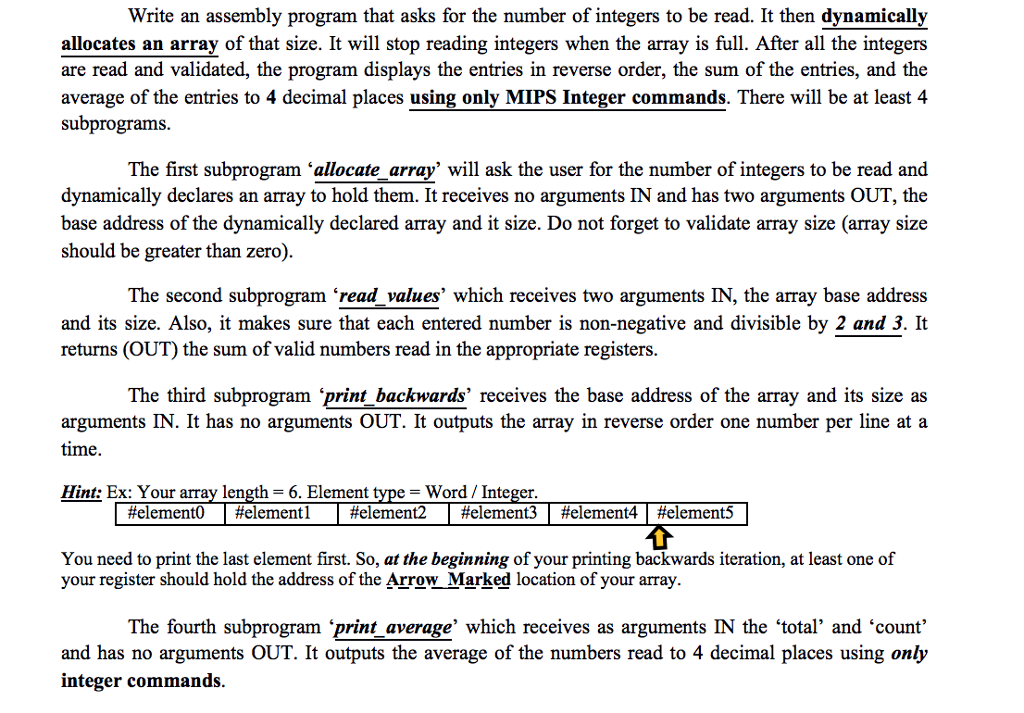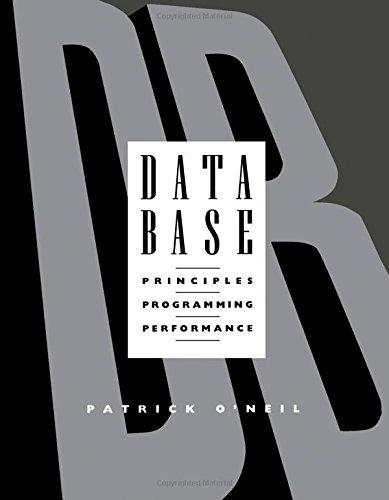
Write an assembly program that asks for the number of integers to be read. It then dynamically allocates an array of that size. It will stop reading integers when the array is full. After all the integers are read and validated, th average of the entries to 4 decimal places using only MIPS Integer commands. There will be at least 4 subprograms e program displays the entries in reverse order, the sum of the entries, and the The first subprogram 'allocate array' will ask the user for the number of integers to be read and OUT, the dynamically declares an array to hold them. It receives no arguments IN and has two arguments base address of the dynamically declared array and it size. Do not forget to validate array size (array size should be greater than zero) The second subprogram 'read values' which receives two arguments IN, the array base address and its size. Also, it makes sure that each entered number is non-negative and divisible by 2 and 3. It returns (OUT) the sum of valid numbers read in the appropriate registers The third d subprogram 'print backwards' receives the base address of the array and its size as arguments IN. It has no arguments OUT. It outputs the array in reverse order one number per line at a time. Hint: Ex: Your array len gth-6. Element type-Word / Integer #element0 | felementl | felement2 | felement3 | #element4l #elementS You need to print the last element first. So, at the beginning of your printing backwards iteration, at least one of your register should hold the address of the Arrow Marked location of your array The fourth subprogram print average, which receives as arguments IN the total, and count' and has no arguments OUT. It outputs the average of the numbers read to 4 decimal places using only integer commands Write an assembly program that asks for the number of integers to be read. It then dynamically allocates an array of that size. It will stop reading integers when the array is full. After all the integers are read and validated, th average of the entries to 4 decimal places using only MIPS Integer commands. There will be at least 4 subprograms e program displays the entries in reverse order, the sum of the entries, and the The first subprogram 'allocate array' will ask the user for the number of integers to be read and OUT, the dynamically declares an array to hold them. It receives no arguments IN and has two arguments base address of the dynamically declared array and it size. Do not forget to validate array size (array size should be greater than zero) The second subprogram 'read values' which receives two arguments IN, the array base address and its size. Also, it makes sure that each entered number is non-negative and divisible by 2 and 3. It returns (OUT) the sum of valid numbers read in the appropriate registers The third d subprogram 'print backwards' receives the base address of the array and its size as arguments IN. It has no arguments OUT. It outputs the array in reverse order one number per line at a time. Hint: Ex: Your array len gth-6. Element type-Word / Integer #element0 | felementl | felement2 | felement3 | #element4l #elementS You need to print the last element first. So, at the beginning of your printing backwards iteration, at least one of your register should hold the address of the Arrow Marked location of your array The fourth subprogram print average, which receives as arguments IN the total, and count' and has no arguments OUT. It outputs the average of the numbers read to 4 decimal places using only integer commands







